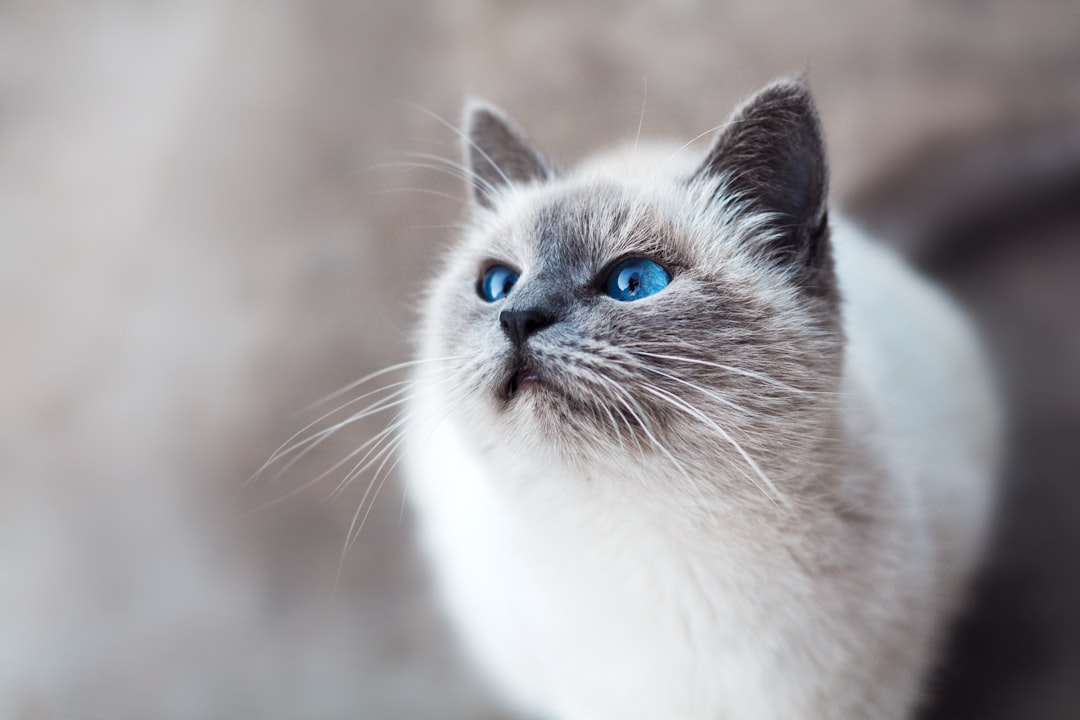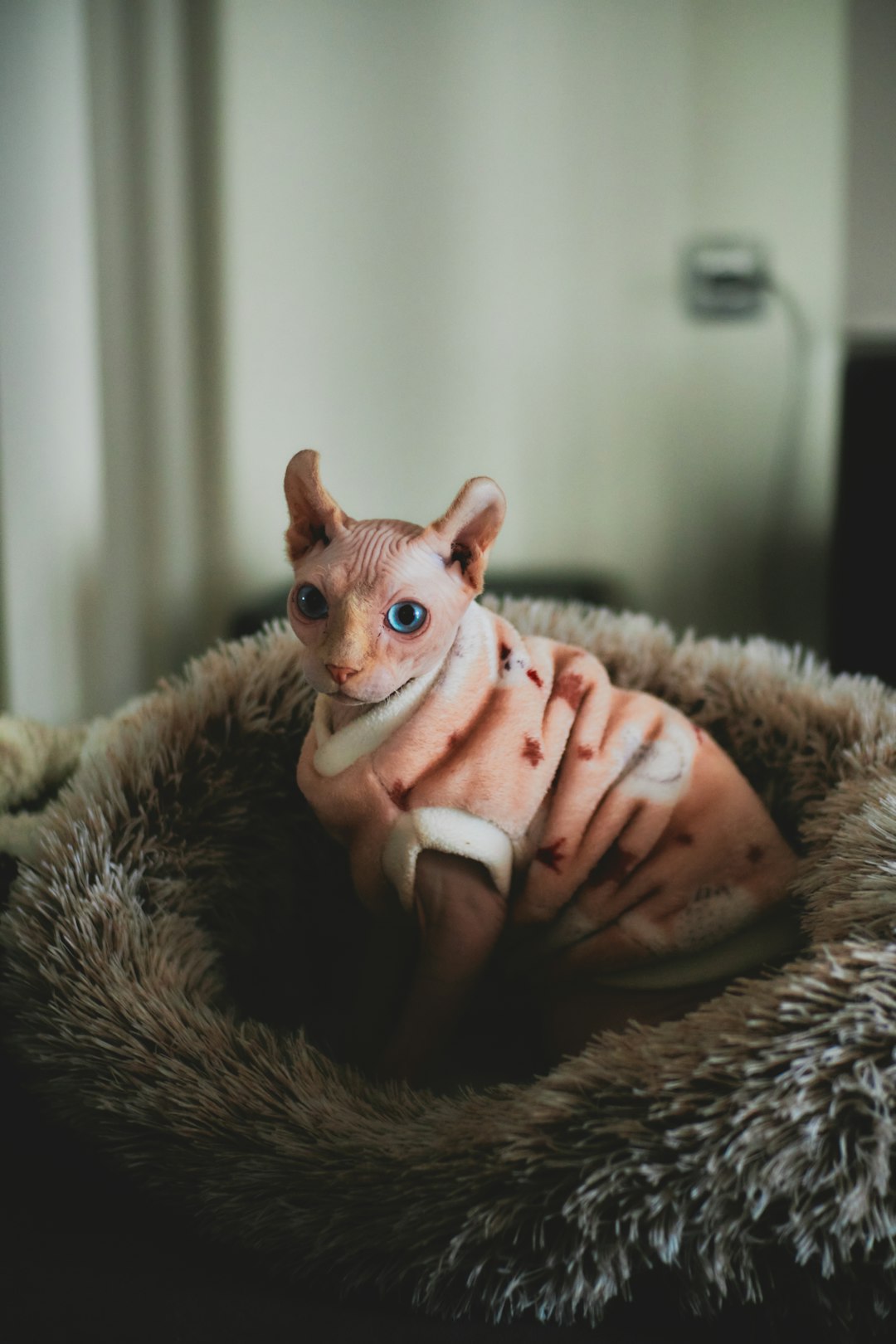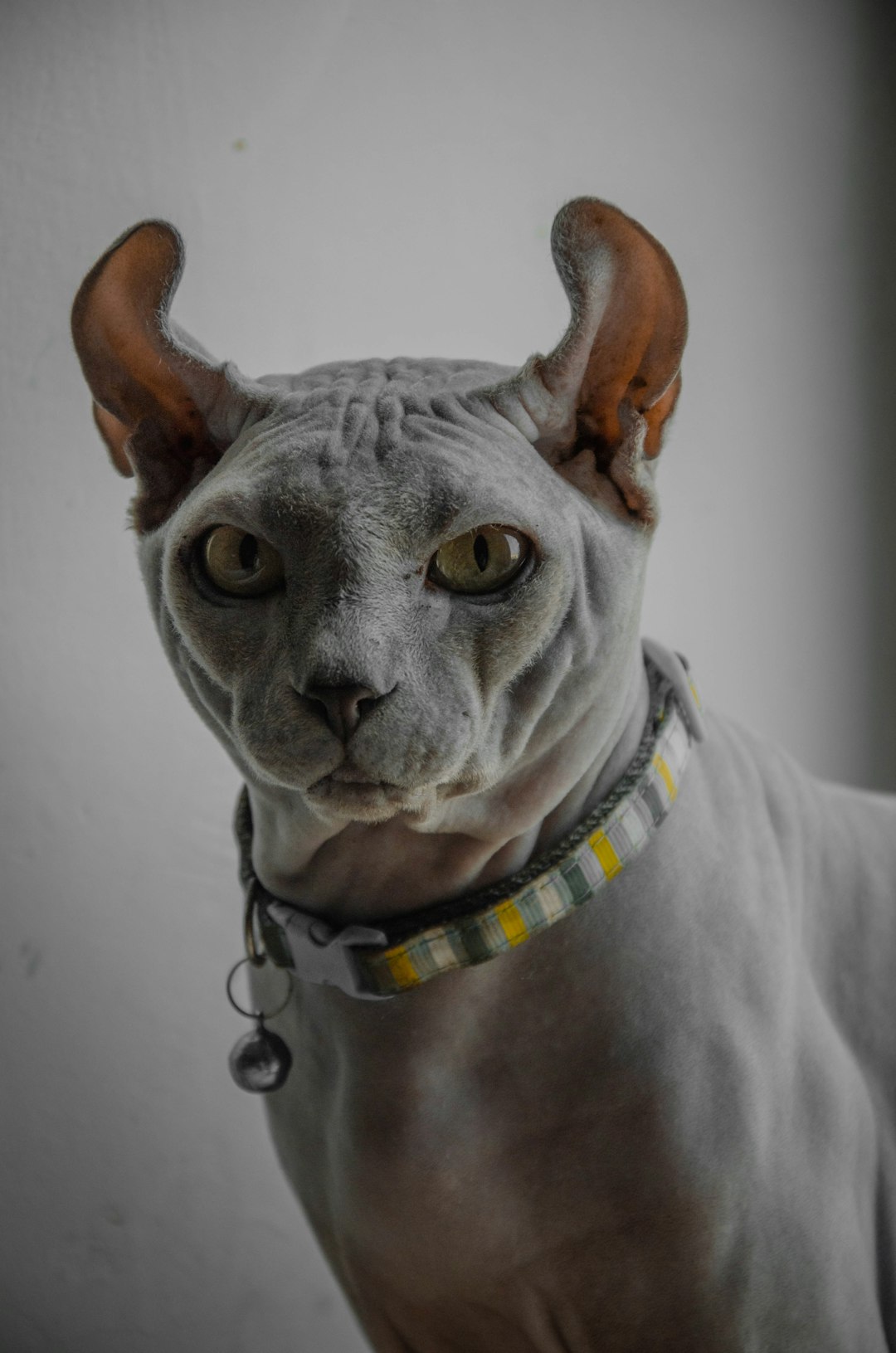As winter blankets the world in white, the curious patterns of cat tracks in snow can tell an intriguing story about your feline friend’s adventures. Understanding these tracks not only sparks fascination but also helps us gain insights into your cat’s behavior and movements. From deciphering the different types of tracks and their unique features to learning how to identify domestic cat tracks, this blog post will guide you through the snowy footprints left behind by your furry companion. Furthermore, we’ll explore how seasonal changes can affect these tracks and debunk common myths surrounding them. By the end, you’ll not only appreciate the artistry of these prints but also uncover the hidden details they reveal about your cat.
Understanding Cat Tracks: A Primer
Cat tracks in snow are more than just charming imprints left behind by our feline companions; they provide an intriguing window into the secretive lives of cats. Understanding these tracks can deepen your appreciation for your pet while also serving as a valuable tool for observation. This primer will help demystify feline tracks, presenting various characteristics, patterns, and meanings behind their formation in snowy conditions.
What Are Cat Tracks?
Cat tracks are essentially the footprints made by a cat’s paws, each revealing crucial information about the animal’s behavior, health, and environment. When snow blankets the ground, it creates a perfect canvas—soft and malleable—that captures the unique structure and size of a cat’s paws.
Key Features of Cat Tracks
Paw Size and Shape:
- Print Size: The average domestic cat’s paw print measures about 1.5 to 2 inches wide.
- Toe Arrangement: Feline tracks typically show four toes with claws that may, or may not, be visible depending on whether the cat was walking or running.
Webbing and Pads:
- Digital Pads: Cats have five toe pads; the back pads are larger and resemble a triangle.
- Claw Imprints: Unlike dogs, a cat’s claws are retractable. So, while claws may not always be evident in every print, they can sometimes leave a faint impression in the snow.
Gait Patterns:
- A cat’s walking pattern differs significantly from that of other animals. They often land their back paws in the same track as their front paws, which gives their trackways a distinctive look.
Common Track Patterns
Cats exhibit different movement styles, each leaving behind a unique track pattern:
| Gait Type | Description | Track Features |
|---|---|---|
| Walking | Slow, deliberate movement. | Back paws align with front paws. |
| Running | Quick, almost bounding movement. | Larger, spaced-out tracks. |
| Pouncing | Short bursts to catch prey. | Tracks are often in a cluster, indicating leaps. |
Observational Insights
By examining cat tracks in snow, you can glean critical insights regarding your cat’s state of mind, health, and activities:
- Hunting Behavior: Clusters of tracks may indicate a hunting attempt, with signs of hopping or pouncing leading up to the print.
- Social Interactions: Overlapping track patterns can suggest interaction with other animals or cats.
- Exploration Habits: Patterns that exhibit varied paths reflect a curious nature, with cats frequently roaming.
Tracking Cat Activity
Monitoring cat tracks in snow can provide insights into your cat’s daily routines and habits. Look for:
- Repeated patterns in areas where your cat frequently explores.
- Differences in track clarity, which may indicate changes in your cat’s health or mood.
Understanding these fundamental concepts of cat tracks enables you to appreciate the subtleties of your feline’s life outside. Next time you observe cat tracks in snow, take a moment to consider the story being told by these paw prints. Your awareness of their characteristics not only enhances your bond with your pet but also invites a deeper understanding of their natural instincts and behaviors.
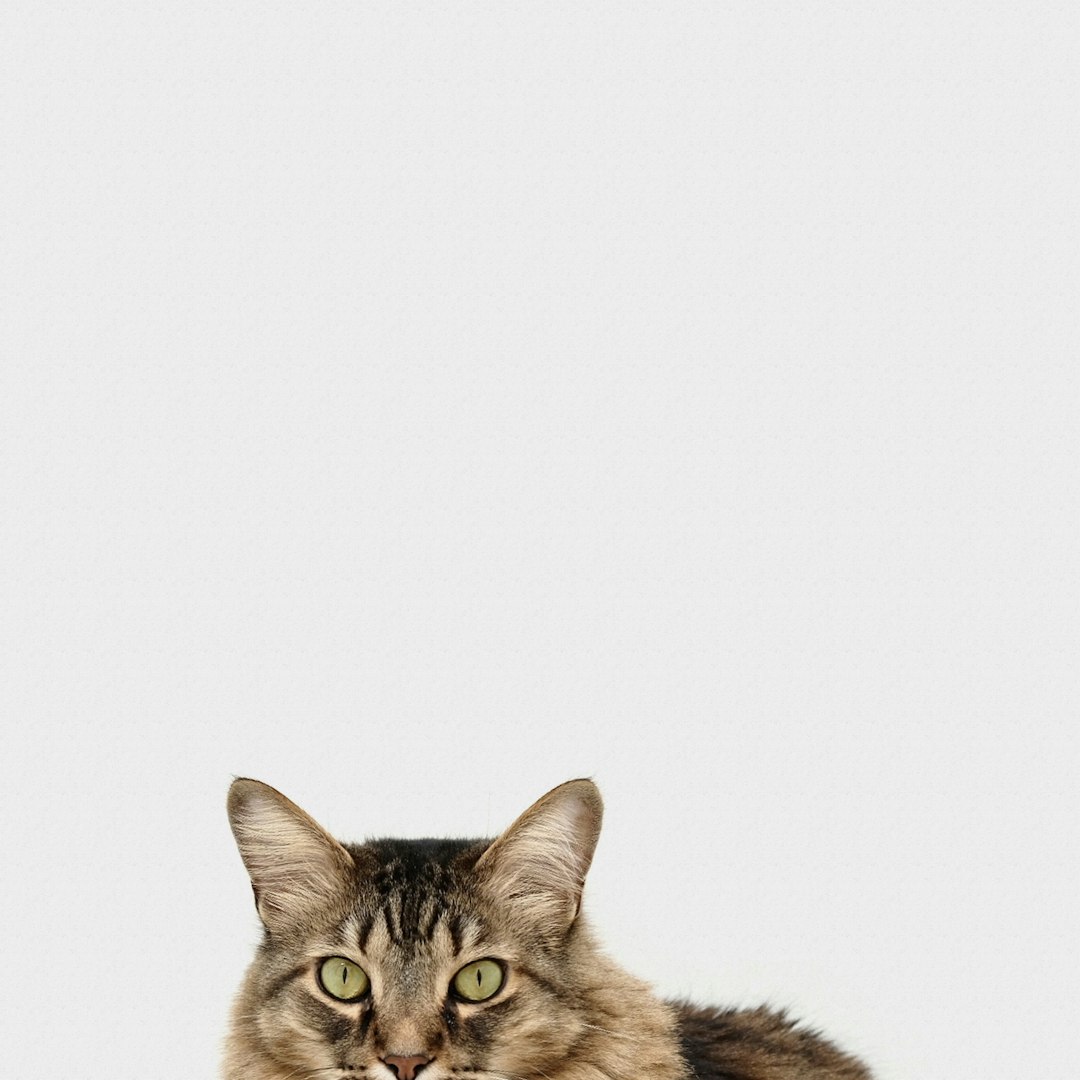
Types of Cat Tracks and Their Features
Understanding the various types of cat tracks and their distinguishing features is essential for anyone interested in feline behavior, whether you are a cat owner, a wildlife enthusiast, or a naturalist. Cat tracks in snow provide an excellent opportunity to analyze and appreciate the unique traits of these prints, revealing much about the characteristics of domestic cats and their wild counterparts.
General Features of Cat Tracks
When examining cat tracks, several key features can assist in identifying the specific type of tracks:
- Shape: Cat tracks generally have a rounded or triangular shape, depending on the breed.
- Size: Size varies among breeds with domestic cats typically having smaller tracks compared to larger wild cats like cougars or jaguars.
- Toe Configuration: Most cat tracks will show four toes per foot. Domestic cats have a distinct "M" shaped toe formation, while larger species may exhibit more pronounced separations.
- Claw Marks: Unlike dogs, cat tracks usually do not show claw marks unless the cat is in a defensive or aggressive stance, as they retract their claws.
- Heel Pads: Each track features a larger heel pad that can help differentiate between species. For example, domestic cat tracks have a softer, curved heel pad compared to wild cats.
Distinguishing Between Domestic and Wild Cat Tracks
To clarify the differences further, we can categorize cat tracks into domestic and wild types:
| Feature | Domestic Cat Tracks | Wild Cat Tracks |
|---|---|---|
| Size | Smaller (up to 2 inches) | Larger (up to 5 inches) |
| Toe Shape | Rounded, compact | More elongated |
| Number of Toes | 4 toes + heel pad | 4 toes + larger heel pad |
| Claw Visibility | Generally hidden | Can be visible in some cases |
| Common Types | House Cat, Feral Cat | Lynx, Bobcat, Cougar |
Types of Domestic Cat Tracks
Within the realm of domestic cats, tracks can further be categorized based on their activities, leading us to a more nuanced understanding of their movements:
Standard Walking Tracks:
- Description: These display softer impressions in the snow, generally appearing closer together.
- Behavior: Indicate a relaxed or curious demeanor as the cat strolls through its territory.
Running Tracks:
- Description: Show greater spacing between tracks and a more pronounced toe splay.
- Behavior: Suggest excitement or a quick dash, perhaps spurred by the sight of a bird or another animal.
Pouncing Tracks:
- Description: Characterized by deeper impressions with a sudden drop from the preceding steps.
- Behavior: Indicate hunting behavior, where the cat has spotted prey and prepares to leap.
Unique Features to Observe
When observing cat tracks in snow, consider the following unique features to identify the activity:
- Scrapes or Scratches: Often found near tracks suggesting the cat was attempting to catch something.
- Path Width: The width between tracks can indicate whether the cat is walking normally or sprinting.
- Paw Position: Alignment of the tracks (straight line vs. wide arc) may reveal the cat’s mood or health (e.g., limping can lead to uneven tracks).
These nuances provide insightful information not only about your feline companion but also about their interactions with the environment. By recognizing these different types of tracks and their associated characteristics, cat enthusiasts can gain a deeper appreciation of their pet cats’ behaviors and activities in the snowy expanse.
How to Identify Domestic Cat Tracks in the Snow
Understanding how to identify domestic cat tracks in the snow can offer intriguing insights into your feline friend’s behavior, habits, and even health. It’s not just about recognizing their paw prints; it’s about piecing together the story that those prints leave behind.
Characteristics of Domestic Cat Tracks
Domestic cats leave behind distinctive tracks, and by examining them closely, you can learn much about the activities of your pet in winter settings. Here are some key characteristics to help you identify cat tracks:
- Size: Cat tracks generally span about 1.5 to 2.5 inches in length. Comparing these tracks to other animals can help ensure that you are correctly identifying feline footprints.
- Shape: A domestic cat’s paw print is typically rounded or oval in shape. The overall look is neat and tidy, with little extend beyond the basic outline.
- Toe Configuration: Cat tracks have four toes on each paw, arranged in a semi-circle, with the pad usually centered beneath. The digits are well-defined and may even show claw marks if they are visible in the snow.
- Paw Pads: Look for the presence of paw pads, which are often heart-shaped. You may see three major pads in the middle section of the paw print, representing the metacarpal pads, with the outer toe pads appearing as smaller ovals.
Differentiating from Other Tracks
To accurately identify domestic cat tracks amidst the winter wonderland, consider this comparison with tracks of other common animals:
| Animal Type | Track Size | Toe Configuration | Claw Marks |
|---|---|---|---|
| Domestic Cat | 1.5 – 2.5 inches | 4 toes, rounded, heart-shaped pads | May be visible |
| Dog (Small) | 2-3 inches | 4 toes, often with a larger pad center | Usually visible |
| Fox | 2-3 inches | 4 toes, oval, wider layout | Not typically visible |
| Raccoon | 3-4 inches | 5 fingers visible, wider prints | Visible and claw marks |
Tips for Identifying Cat Tracks
When you’re on the hunt for cat tracks in snow, keep these tips in mind:
- Timing: Tracks are best observed soon after a snowfall, before they are disturbed by wind or other animals. Fresh tracks offer a clearer picture of what your cat has been up to.
- Track Patterns: Observe the distance between prints. A domestic cat typically has a narrow stride, reflecting their stealthy walking style. In contrast, running tracks will show prints closer together, indicative of speed.
- Location: Focus on areas your cat frequents—gardens, near fences, or pathways leading to their favorite resting spots.
What Tracking Can Show You
By analyzing these tracks, you can infer various behaviors and activities:
- Hunting Patterns: Deeper, more pronounced tracks might indicate that your cat was exploring or hunting.
- Playfulness: Tracks that are scattered and erratic suggest that your cat was having a playful romp in the snow.
As you discover the delicacy of cat tracks in snow, you not only deepen your understanding of your feline friend but also cultivate a greater appreciation for the subtleties of nature. Tracking becomes a journey that reveals the secretive world of your outdoor explorer, allowing you to connect more intimately with your pet’s instincts and personality.
What Cat Tracks Can Tell Us About Their Behavior
When you spot cat tracks in snow, you’re not just observing a frozen moment in time; you’re decoding a detailed narrative about your feline friend’s behavior, activities, and even emotional state. Every indentation of their paw prints reveals insights that can enhance our understanding of their personality and habits. Here are some key aspects of what these tracks can tell us:
Hunting Behavior
Pouncing Tracks: A series of prints with a distinct, higher indentation followed by a trail of smaller scratch marks indicates that your cat is in hunting mode. This behavior typically involves:
- Silent stalking: Cats often walk with precise placements to minimize noise.
- Pouncing motions: Various gaits show they are calculating their jumps to ambush prey effectively.
Exploratory Tracks: When a cat is simply wandering, their prints will appear more spaced out. This indicates a relaxed state, allowing them to sniff around and explore their environment.
Social Behavior
Marking Territory: Look for prints that are deeper and spaced wider than usual. Such tracks suggest a dominant behavior where your cat is marking its territory. You may also notice:
- Scratching marks nearby: These can often be seen alongside their tracks, indicating aggression or a desire to establish boundaries.
Feline Interactions: If you spot prints of two different sizes together, it could indicate that your cat has been socializing. Noting the proximity of the tracks reveals:
- Playful behavior: If the prints are intertwined, this suggests cooperation or friendly interaction with another cat.
Mood Indicators
Playfulness: Tracks that are erratic or disorganized often signify a playful disposition. Look for:
- Zig-zag patterns: Indicating chasing or playful pouncing.
- Extra prints: That appear to be scattered or uneven may suggest your cat is in a state of excitement or curiosity.
Stress or Fear: Tracks that lead to a rapid exit or unusually neat prints may reveal that your cat is feeling threatened or scared. This behavior shows:
- Quick retreat: Indicated by prints that are close together and lead away from a certain area.
- Abrupt changes in direction: Proudly showcasing the defensive nature of your feline friend.
Example Chart of Cat Track Interpretations
| Track Appearance | Behavior Interpretation | Emotional State |
|---|---|---|
| Widespread, deep prints | Territory marking | Confident/Dominant |
| Soft prints, close together | Relaxed exploration | Calm/Curious |
| Erratic, playful patterns | Engaging in playful activities | Excited/Happy |
| Rapidly retreating tracks | Fear or defense mechanisms | Scared/Aggressive |
Understanding these aspects of your cat’s behavior through their tracks can forge a deeper connection and appreciation for the natural instincts of your feline friend. So, the next time you stumble across cat tracks in snow, take a moment to analyze them carefully. What story do they tell about your cat’s adventures in the winter wonderland?
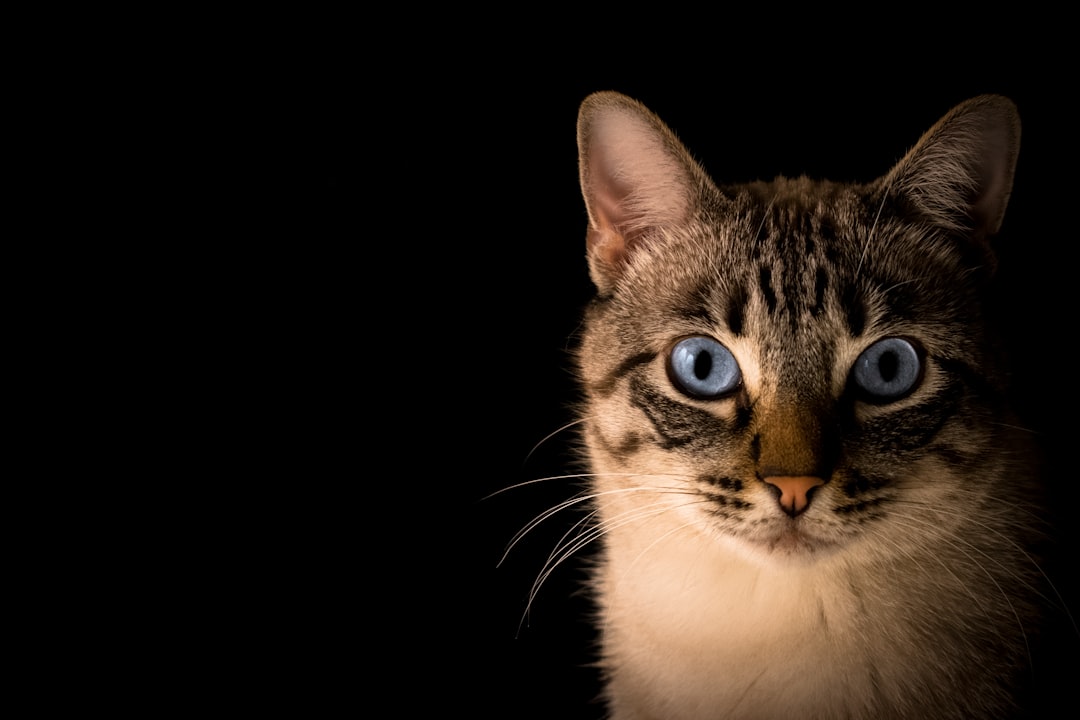
Analyzing the Patterns: Walking, Running, and Pouncing
When observing cat tracks in snow, it becomes essential to understand the intricacies of cat movements. AnaLyzing the patterns left by our feline friends can reveal valuable insights into their behavior, mood, and the environments they inhabit. Different activities—walking, running, and pouncing—produce distinct tracks and patterns in the snow. Below, we outline what to look for in each case.
1. Walking Patterns
Cats often engage in leisurely strolls, especially when they are exploring their familiar territory. The walking pattern can be identified by:
- Track Spacing: Cat tracks from walking typically exhibit a wider spacing between paw prints. This is due to their relaxed gait.
- Track Shape: Each print will generally show four distinct pads with claw imprints not prominently displayed since cats retract their claws while walking.
- Footprint Arrangement: A basic walking pattern will show a series of parallel impressions, which may also overlap slightly.
Example of Walking Track Features:
| Feature | Description |
|---|---|
| Track Size | Approximately the length of a human’s fist |
| Paw Print Shape | Oval with rounded edges |
| Identifiable Markings | Less defined claws |
2. Running Patterns
When a cat runs—whether chasing prey or evading a potential threat—the nature of their tracks changes significantly. Observing tracks left by a running cat involves:
- Closer Track Spacing: The paw prints are closer together, indicating a faster pace.
- Increased Pressure: These tracks typically show more defined outlines due to greater downward pressure.
- Track Arrangement: The arrangement may resemble a straight line with little lateral displacement, suggesting a sprint or quick dash.
Characteristics of Running Track Patterns:
| Feature | Description |
|---|---|
| Track Width | Distinct, with less distance between prints |
| Paw Print Distinctness | More pronounced claw marks |
| Orientation | Tracks may spread out as the cat accelerates |
3. Pouncing Patterns
Pouncing is an instinctual behavior among cats, predominantly observed when they’re stalking prey. The tracks created during this action can be quite telling:
- Jump Impressions: Pounce tracks often show a pair of deeper impressions, where the cat’s paws landed, accompanied by trailing paw prints leading to the pounce point.
- Lack of Intermittent Tracks: Pouncing typically interrupts the regular pattern of walking or running showing a clear leap.
- Abbreviated Paths: The paw prints may lead in a straight line to a specific spot, indicating the cat’s focus and intent was on capturing a target.
Pouncing Track Characteristics:
| Feature | Description |
|---|---|
| Track Depth | Depressed footprints indicating force |
| Distance To Imprint | Short distance before pounce marks |
| Additional Signs | Snow disturbances around the pounce location |
Understanding these patterns helps cat owners and enthusiasts alike better appreciate their feline’s behavior, agility, and hunting strategies. By analyzing cat tracks in snow, one can not only gain insight into the daily life of domestic cats but also develop a deeper connection with these agile creatures. Paying attention to these details can unveil hidden stories of their playful adventures and natural instincts.
Seasonal Changes: Cat Tracks in Winter vs. Other Seasons
When winter blankets the ground with snow, a fascinating transformation occurs in the landscape that cat owners must be aware of: cat tracks in snow emerge as a vivid representation of your feline friend’s activities. However, the season influences the nature and visibility of these tracks significantly. Understanding the differences between cat tracks in winter and other seasons can reveal much about your cat’s behavior and environment.
Comparative Analysis of Cat Tracks in Different Seasons
| Season | Visibility | Track Depth | Track Features | Behavior Insights |
|---|---|---|---|---|
| Winter | Highly visible due to contrast against the snow | Shallow but distinct | Clear paw prints; sometimes includes claw marks | Cats tend to be more active in colder months, exploring and hunting. |
| Spring | Moderate visibility | Moderate to deep | Tracks may become muddled; less distinct | Increased activity as cats explore the thawed landscape and new scents. |
| Summer | Good visibility | Deep tracks | Tracks are often accompanied by dirt or mud | Cats may roam further for food, showing signs of territorial marking. |
| Fall | Moderate visibility | Variable | Track dimensions can vary with shedding fur; leaves may obscure tracks | Cats often prepare for winter, adjusting their territory and food hunting patterns. |
Characteristics of Winter Cat Tracks
Distinct Patterns: Unlike other seasons, snow provides a clean canvas that highlights your cat’s paw shape and movement. During winter, you’ll notice:
- Complete Paw Prints: Cats leave well-defined paw prints due to the soft texture of snow, making it easier to identify their tracks.
- Claw Imprints: Snow often captures the sharpness of a cat’s claws, providing additional details for identification.
- Scattering: If your cat has been playing vigorously, the tracks may appear scattered, indicating a playful nature during chilly days.
Tracking Behavior: Cats utilize snow for various reasons in winter:
- Hunting: The white, reflective surface allows them to track potential prey more effectively.
- Playfulness: Many cats exhibit a more playful attitude in snow, leading to an abundance of varied track styles.
- Territorial Marking: Cats may leave tracks to assert their presence in a wider area, particularly if they feel the cold season impacts their food sources.
Changes in Tracks During Other Seasons
Spring: Melting snow leads to muddy conditions. Cats’ tracks may blend with the dirt, requiring careful observation to discern them among other animals. The behavior shifts towards exploration, where cats are likely to enjoy the warmth and increased activity from hibernating wildlife.
Summer: The warmer temperatures contribute to softer ground, creating deeper impressions. Cats are often more adventurous, which is reflected in longer track lengths as they traverse various terrains, marking their territory.
Fall: As temperatures drop and traces of snow begin to appear, feline tracks may be inconsistent due to leaf coverage. However, this leads to unique sightings as cats scavenge and adjust to pre-winter conditions.
Recognizing these seasonal shifts in cat tracks in snow not only helps in understanding your feline friend’s behavior but also sheds light on their environment and interactions with the surroundings. By observing closely, you can distinguish between the playful pounces of winter and the exploratory frenzy of summer.
Common Myths About Cat Tracks in Snow
The sight of cat tracks in snow can bring joy and curiosity to any pet owner or nature observer. However, several myths surround these tracks, leading to misconceptions about feline behavior and characteristics. Addressing these myths can enhance our understanding and appreciation of our furry companions.
Myth 1: All Cat Tracks Look the Same
One common misconception is that all cat tracks appear identical regardless of breed or age. In reality, various factors contribute to the differences observed in their tracks:
- Size and Shape: Different breeds, such as the large Maine Coon and the small Siamese, produce tracks of varying sizes. While short-haired cats may leave a distinctly different impression compared to long-haired cats, their foot structure plays a crucial role in track formation.
- Pad Patterns: Some breeds have unique features. For example, certain cats may have prominent toe pads that can result in a wider footprint than others, making identification easier.
| Cat Breed | Track Size | Distinguishing Features |
|---|---|---|
| Maine Coon | Larger than average | Broad toes, pronounced claws |
| Siamese | Smaller than average | Narrow, long tracks |
| Persian | Medium | Fluffy pads, larger than most |
| Bengal | Medium to Large | Distinct claw impressions |
Myth 2: Tracks Always Indicate a Cat’s Movement Direction
Another widespread belief is that the orientation of tracks definitively shows which direction a cat has traveled. This can often lead to confusion, especially for novice observers. In truth:
- Ambiguity in Prints: Cats can sometimes cover their tracks or create patterns where reverse movements occur, resulting in overlapping prints. This makes it challenging to determine the exact path taken.
- Overlapping Tracks: When multiple tracks are present, it’s easy to misinterpret the direction the cat was going. Look for a clear sequence and the arrangement of tracks to gain more accurate insights.
Myth 3: All Felines Leave a Distinctive Track Pattern
Many people assume that all felines, from domestic pets to wild ones, leave similar prints in the snow. However, it’s essential to differentiate between domestic cats and larger wild cats. Key differences include:
- Imprint Size: Wild cats such as cougars and bobcats create much larger tracks compared to house cats. This is due to their size and strength.
- Toe Arrangement: The structure of the footprints varies. Domestic cats have four toes on each foot, while larger felines might leave prints that are distinctly larger with different arrangements depending on the species.
Myth 4: Tracks Only Indicate Visible Behavior
It’s often thought that looking at the tracks solely reveals whether a cat was running or walking. However:
- Behavioral Context: Tracks can also provide insights into mood and intent. For example, closely spaced prints may indicate stalking or pouncing, while widely spaced tracks might suggest a relaxed stroll.
- Environmental Influence: Snow texture and depth also play a role in how tracks form, leading to variations based on conditions, such as fluffy snow versus packed snow.
Myth 5: Snow Prints Are Temporary
Lastly, many believe that cat tracks in snow are fleeting and do not carry long-term significance. In reality, these impressions can provide valuable information about local fauna over time:
- Regular Observations: By consistently observing tracks in particular areas, cat enthusiasts can build a picture of their pet’s roaming habits.
- Tracking Long-term Changes: Observing these prints over several winters can reveal patterns in activities, movements through territories, and interactions with other wildlife.
In summary, clearing up these misconceptions regarding cat tracks not only enriches our knowledge but also deepens the bond we share with our feline friends. Paying heed to the nuances of these tracks can lead to a better understanding of both domestic and wild cats, fostering an appreciation for their complexity and adaptability.
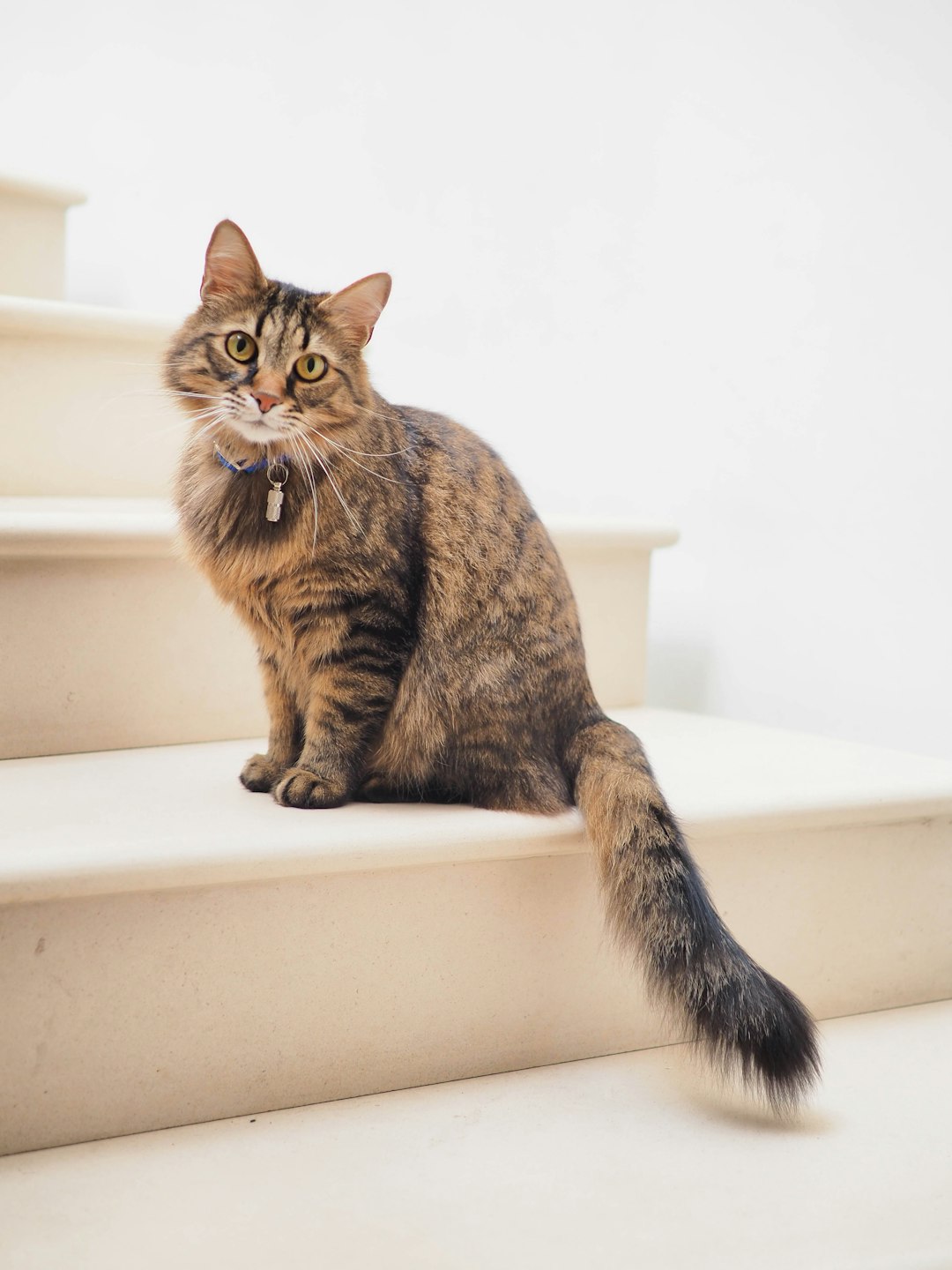
How to Track Your Cat’s Movements in the Snow
Tracking your cat’s movements in the snow can be both a fascinating and informative experience. Not only does it provide insights into your feline friend’s behavior, but it also offers an opportunity to engage with the great outdoors. Here are some practical tips and methods that can help you effectively track cat tracks in snow and understand your cat’s activities while exploring the winter landscape.
Essential Tools for Tracking
Before you head outdoors, gather the following tools to aid in your tracking efforts:
- Camera or Smartphone: Capture images of the tracks for further analysis or documentation.
- Notebook: Record observations such as the time, date, and specific locations of the tracks.
- Measuring Tools: A ruler or measuring tape can help you gauge the size of the prints, which may provide insights into your cat’s activity (e.g., size of the paw prints).
- Footwear: Wear insulated boots to keep your feet warm while walking through the snow.
Step-by-Step Guide to Tracking
Find a Good Location: Look for areas where fresh snow has fallen and where you suspect your cat has ventured. Popular spots include your backyard, nearby parks, or wooded areas.
Look for Tracks: Gently observe your surroundings for cat tracks in snow. The initial tracks may be faint, so be patient and scan the area thoroughly.
Analyze the Tracks: Once you locate the tracks, analyze their features:
- Shape: Domestic cat tracks are generally round and compact, with partial claw marks often visible.
- Spacing: Measure the distance between tracks; closer spacing may suggest walking while wider spacing might indicate running.
- Direction: Identify which direction the cat is moving. This can help you understand where it may have gone or what it was pursuing.
Document Findings: Take photographs and make notes regarding:
- Date and Time: Essential for tracking patterns over time.
- Track Conditions: Is the snow soft, hard, or icy? Weather conditions can affect the visibility and detail of the tracks.
- Other Animals: Make note if other wildlife tracks intersect with your cat’s, providing further context to its behavior.
Additional Techniques
For a more comprehensive approach to tracking:
- Create a Track Log: Design a simple log template that includes a date, location, number of tracks observed, and any notable behaviors or interactions.
| Date | Location | Tracks Observed | Notable Behaviors |
|---|---|---|---|
| Jan 10 | Backyard | 15 tracks | Chased a squirrel |
| Jan 15 | Local Park | 8 tracks | Interacted with another cat |
- Use Technology: Consider using GPS collars or pet tracking devices. These can provide valuable data on your cat’s movements over larger areas.
Observing Patterns Over Time
Over time, tracking your cat’s movements can reveal fascinating patterns, such as favorite routes or potential hunting spots. By consistently documenting your findings, you may uncover insights into your cat’s behavior that could help enhance their safety and enjoyment during winter outings.
Overall, the process of tracking your cat’s movements in the snow not only enhances your connection with your pet but also enriches your understanding of the feline nature, particularly in the intriguing context of their winter adventures.
The Importance of Cat Tracks for Wildlife Observation
Understanding the nuances of cat tracks in snow not only adds to our appreciation of our feline companions but also plays a significant role in wildlife observation. These seemingly simple prints left behind can be a wealth of information about local ecosystems, the dynamics of predator and prey, and the general health of animal populations.
Ecosystem Insights
The presence of cat tracks in snow provides insights into the distribution of wild and domestic cat populations in a specific area. By studying these tracks, wildlife enthusiasts and researchers can determine:
- Habitat Preferences: Understanding where cats like to roam helps identify the types of habitats they frequent. This can include forested areas, fields, or urban environments.
- Territorial Range: Analyzing the spread and spacing of tracks can reveal the territorial behavior of wild cats, allowing observers to estimate their population density and health.
- Interaction with Other Species: The tracks may overlap with those of other wildlife, enabling researchers to investigate predator-prey dynamics, competition between species, and human-animal interactions.
Tracking Behavior in Various Seasons
While snow provides a clear canvas to observe tracks, the conditions can also differ through the seasons. Understanding how tracks change can lead to various conclusions:
- Winter vs. Summer Activity: Snow reveals tracks that are often hidden in other seasons. In winter, cats may be more active while hunting or patrolling their territory. By comparing snow tracks in winter to those on the ground in the summer, one can deduce changes in behavior, perhaps due to availability of prey or temperature fluctuations.
- Migration Patterns: During certain times of the year, animals might migrate. Observing cat tracks during these periods helps establish new patterns or emerging territories.
The Data Gathering Process
Wildlife biologists and researchers utilize cat tracks as part of their data-gathering methodology, which includes:
- Photographic Documentation: Capturing detailed photos of the tracks allows for size and shape comparison, which is crucial for species identification.
- Track Surveys: Systematic surveys of cat tracks can facilitate broader studies on population movements and habitat usage over time. These surveys often include tracking any accompanying animal prints, which can indicate predator-prey relationships.
- Environmental Indicators: The presence or absence of tracks can serve as indicators of environmental health. For example, a decline in cat tracks might coincide with a decrease in prey populations or increased human activity.
Practical Applications for Wildlife Enthusiasts
For wildlife observers, understanding cat tracks can enrich the experience and allow for practical applications:
- Increased Observation Skills: Learning to recognize variations in cat tracks sharpens overall tracking abilities, helping you identify other wildlife.
- Participatory Citizen Science: Engaging in citizen science projects where track data is collected can contribute significantly to local biodiversity studies. Observers can submit their findings to databases, enhancing knowledge on cat behavior and population dynamics.
- Education on Local Wildlife: Knowing cat tracks and their implications provides an opportunity to educate others about the local ecosystem and the importance of conservation efforts.
In essence, while cat tracks in snow may initially appear as mere prints left by playful felines, they serve as critical indicators of wildlife activity, behavioral study, and ecological health. By engaging with the natural world through these observations, we can foster a deeper connection to the wildlife surrounding us and contribute to ongoing conservation efforts.
Tips for Cat Owners: What to Do with Cat Tracks
Navigating the snowy landscape can be a thrilling adventure for both you and your cat. When you stumble upon cat tracks in snow, it offers a great opportunity not only to connect with your pet but also to learn more about their actions and behaviors. Here are some practical tips for cat owners on how to address, analyze, and even utilize these signs of your feline companion.
Observing and Documenting the Tracks
- Take Photos: When you find your cat’s tracks in the snow, capture the moment with photographs. These images can help you compare different tracks over time.
- Measure the Tracks: Use a ruler or a measuring tape to note the size of the tracks and the distance between them. This data can provide insights about your cat’s size and how they typically move.
- Record the Date and Time: Keep a log of when and where you found the tracks. This information might help you understand your cat’s habits and routines better.
Analyzing the Tracks
Understanding cat tracks in snow can shed light on your cat’s activities. Here’s how to interpret the tracks you come across:
| Track Type | Characteristics | Behavior Indicated |
|---|---|---|
| Paw Prints | Distinct toe pads, often in pairs | Walking calmly or exploring |
| Claws Visible | Claw marks evident around the print | Running or climbing |
| Single Tracks | One paw at a time, spaced widely | Hunting behavior |
| Pouncing Marks | Deep depressions, often in snow | Engaging with prey |
Safety Considerations
Ensuring your cat’s safety while exploring their tracks is paramount:
- Monitor Weather Conditions: Snow can be deceiving; ensure that the weather is safe for your cat to be outdoors. Avoid taking them out in severe conditions.
- Beware of Wildlife: If you notice tracks from other animals nearby, keep an eye out and ensure your cat does not encounter potentially dangerous wildlife.
- Provide a Path: For a relaxed expedition, create a clear path in your yard. This can help guide your cat and funnel them away from potential hazards.
Using the Tracks for Enrichment
Cat tracks can serve as an excellent basis for stimulating activities to keep your feline friend engaged:
- Interactive Play: Mimic the movements seen in the tracks during playtime to mimic hunting behavior, using toys that encourage pouncing and chasing.
- Track Mapping: Create a simple map of your yard that includes the areas where the tracks frequently appear. This map can highlight your cat’s favorite spots, allowing you to design enrichment activities around them.
Engaging with Your Community
Where possible, share your findings with other cat owners or wildlife enthusiasts in your community:
- Join Local Forums or Social Media Groups: Post images and insights gathered from observing cat tracks in the snow. You may find valuable tips and stories from others experienced in analyzing animal tracks.
- Organize Community Events: Consider hosting track observation events, which could foster a sense of community while educating others about the unique behaviors of cats and the ecological significance of tracking wildlife.
By understanding what those cat tracks in snow reveal, you can deepen your connection with your feline friend and enhance your overall cat ownership experience. Every paw print tells a story, and with the right tools and knowledge, you can become an expert in deciphering it!
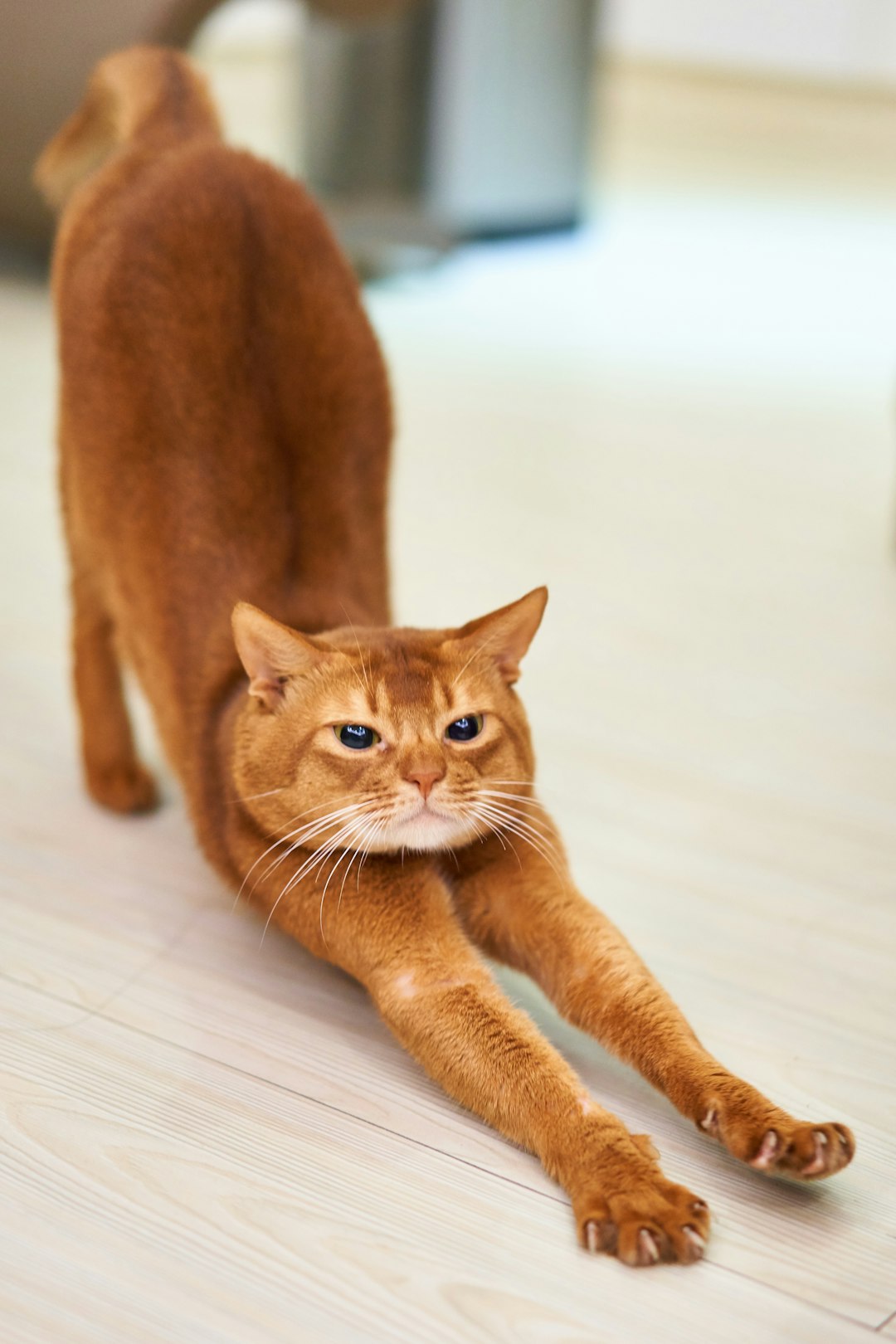
Frequently Asked Questions
What do cat tracks in the snow look like?
Cat tracks in the snow are distinctive and can tell a lot about your feline friend’s behavior and health. Typically, you’ll see a series of small paw prints with a distinct ‘M’ shape due to the layout of their toes. The size of the tracks can vary based on the breed and size of the cat, but they often measure about 1.5 to 2 inches across. Additionally, you may notice the presence of claw marks if your cat uses their claws, which usually show as small impressions in front of the paw prints.
What can I learn from my cat’s tracks in the snow?
Observing your cat’s tracks in the snow can provide insights into their habits, health, and territory. For instance, if the tracks show an even gait, it indicates that your cat is healthy and moving with purpose. If the tracks are erratic or they seem to be dragging their paws, it could suggest a problem. Furthermore, the presence of tracks might indicate your cat’s territorial boundaries or highlight their movement patterns. If you notice paw prints leading to specific areas, it could reveal favorite hunting grounds or play areas.
How can I distinguish between cat tracks and other animal tracks?
To distinguish between cat tracks and those of other animals, focus on the arrangement and size of the prints. Cat tracks typically display the ‘M’ shape due to the positioning of their toes, and the central paw pad is usually larger than the toe pads, which is a feature not seen in many other animal tracks. Additionally, the spacing between tracks and the size can give you clues. For example, a dog’s paw print will be larger and more rounded, with a noticeable claw mark, whereas other small mammals may leave smaller, more oval impressions.
Should I be concerned if I see unfamiliar tracks in the snow?
Finding unfamiliar tracks in the snow can raise concerns, especially if you live in an area where wildlife may pose a threat to your cat. It’s advisable to monitor your cat’s behavior when outside and ensure they are kept safe. If you see tracks from larger predators, such as coyotes or foxes, it may be wise to keep your cat indoors or supervise their outdoor time. Understanding these tracks can also help you identify potential threats and take appropriate precautions to ensure your feline friend’s safety.

